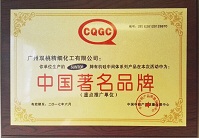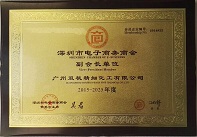
![]() E-mail: admin@gz-chemical.com
E-mail: admin@gz-chemical.com
Email us,best price and silane solutions for you!
Tel:+86 (20) 29035969

![]() E-mail: admin@gz-chemical.com
E-mail: admin@gz-chemical.com
Email us,best price and silane solutions for you!
Tel:+86 (20) 29035969


Researchers at Kanazawa University report in Nature Communications that a crystal of
molecules known as pillar[5]arenes can form a host–guest compound with poly(ethylen
e oxides) polymers. The effect can be used to select polymers with different molecular w
eights and end groups.
When polymers are confined into one-dimensional (1-D) channels, they behave differently.
Their dynamics changes, and they may chemically bind to the surrounding channel. A team
of researchers led by Tomoki Ogoshi from Kanazawa University has now shown that suc
1-D confinement, provided by a molecular crystal of so-called activated pillar[5]arenes, can
be used to selectively capture different types of polymers.
The scientists studied host–guest binding ('complexation') between activated pillar[5]arenes
(abbreviated 'P5') and poly(ethylene oxide) polymers (abbreviated 'PEO'). P5 is a molecule
consisting of 5 identical organic units featuring a benzene ring, with a pentagonal shape. The
monomeric building block of PEO is O-CH2-CH2; PEOs with 100 or more monomers can
easily be synthesized.
Host–guest complexation was achieved by first melting PEO at 80°C, and then immersing
the P5 molecules activated by drying solvates into the melt. By means of nuclear magnetic
resonance (NMR) spectroscopy measurements, Ogoshi and colleagues were able to show
that PEO molecules were taken up by the P5 structure. X-ray diffraction experiments show
ed that the crystal structure of the P5 molecules had changed into a network featuring
channels.
The researchers then looked at what happened with a mixture of PEOs consisting of vario
us numbers of monomers. The number of building blocks affects the weight—the more
monomers, the heavier the polymer. Ogoshi and colleagues discovered that the heavier PE
Os were taken up in larger quantities, showing that the P5 host can select PEOs with high
mass fraction from a polydisperse mixture. By means of computer simulations, it was possible
to attribute this finding to an increased binding energy for the larger (heavier) PEOs.
The scientists also investigated the effect of the PEO's end group. The fastest PEO uptake
was observed for methoxy end groups (O-CH3), for which an equilibrium state was reached
after 3 minutes. For OH and NH2 end groups, the times to reach equilibrium were 10 and 20
minutes, respectively. Uptake for PEO with COOH as the end group was slow.
Guangzhou Double Peach Fine Chemical Co.,Ltd
Address: No 3401 Huangpu East Road, Huangpu District, Guangzhou, China
Tel:+86 (20) 29035969 Fax:+86(20)29035979
Tel/Wechat/Whatsapp:0086 13826126978 admin@gz-chemical.com